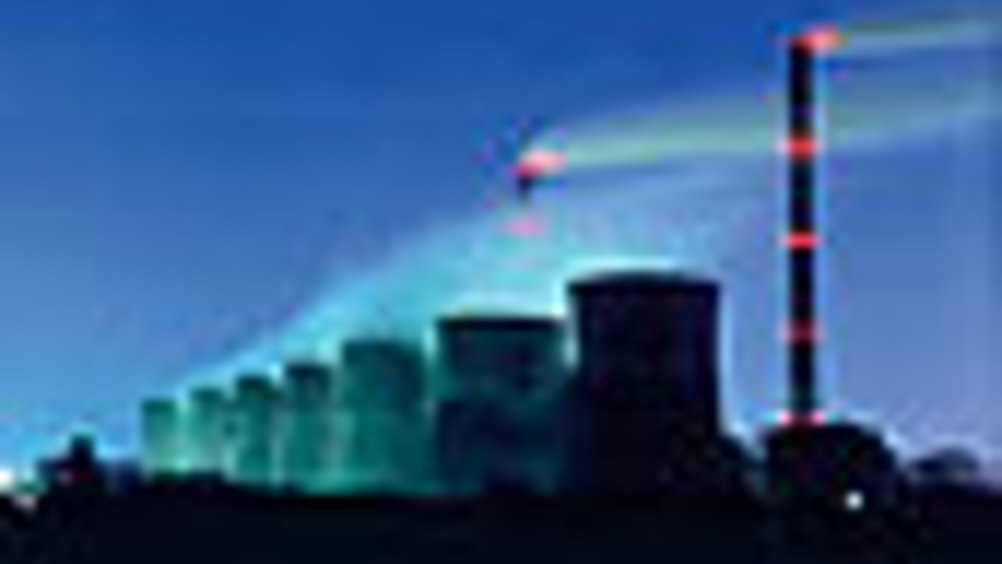Attempts to reduce the environmental impact of coal-fired power stations received a boost with an announcement by E.ON Energie that it is to test three more CO2 capture technologies.
Carbon emission levels are crucial to the acceptability of power plants. E.ON’s plans for the UK’s first new coal-fired power station in two decades became the focus of media attention last month when activists set up a ’climate camp’ near the intended site at Kingsnorth, Kent. E.ON claimed the plant is designed to produce 20 per cent fewer carbon emissions from the outset, with more improvements possible as the technologies become available.
The company said it is developing those technologies already. Kingsnorth is designed to be ’carbon capture ready’, although no single technology to perform this task has yet been selected. ’Today’s known techniques are still too expensive and inefficient,’ said a company spokesman. ’We are investing in improving and testing these methods.’
The company has set itself the goal of halving its specific CO2 emissions by 2030, compared to 1990 levels. The target is 360g/kWh.
To this end, E.ON has revealed it is to try several methods of separating CO2 from flue gases at power stations in Germany, a process known as post combustion capture (PCC). At Heyden, North Rhine-Westphalia, a pilot project will begin next year, using a system designed and delivered by Cansolv Technologies of Montreal.
For a two or three-year test period, the plant will be operated on a slipstream of roughly 20,000m3/hour of flue gas. This represents nearly one per cent of the total flue gas of the plant unit, which has a gross capacity of 920MW. The pilot plant will have a footprint of nearly 200m2.
’The major disadvantage is that these [PCC] processes also represent a huge additional energy demand,’ said an E.ON spokesman. ’The Cansolv pilot is also expected to act as a development step in post combustion capture, showing that a drastically reduced energy demand is possible.
Cansolv has developed the CO2 absorber from its SO2 scrubbing systems. At nearly 40m, the absorber will be the tallest component and will have a diameter of almost 2.5m. Overall, the realisation of this project, the world’s largest for this technology, will cost nearly €10m.
A second trial of a rival PCC technology is to start in 2010 at E.ON’s power plant at Williamshaven.
The company has formed a strategic partnership with the Fluor Corporation of Texas. It will be the first realisation of the Fluor technology on a coal-fired power plant.
The technology uses monoethanolamine (MEA) as the solvent for efficient capture of CO2. ’Working jointly with E.ON, we are seeking to enhance our technology for use with existing and future coal power plants,’ said David Constable, president of Fluor’s power group.
’We have 25 licensed Econamine plants already in commercial operation, many to produce chemical or food grade CO2, and an additional 10 Econamine FG+ licenses sold that will commence commercial operations within the next 18 to 24 months. The next step is to adapt this process to the flue gas conditions of coal-fired power plants.’
The pilot unit, retrofitted to the existing coal-fired plant, is smaller than that to be installed at Heyden and will be designed for a flue gas volume flow of about 16,000m3/hour. It will also cost about €10m.
A third, as yet unnamed, E.ON power plant in Germany will trial PCC technology developed by Mitsubishi Heavy Industries of Japan. It will be the largest of the three, with a flow rate of 20,000m3/hour flue gas.
The first part of the test programme, due to begin in 2010, will validate the reduction of steam demand and steam quality requirements of the CO2 separation process. In addition, the behaviour of the solvent operated with typical flue gas from coal combustion will be investigated. Yet again, the cost will be around €10m.
PCC is seen as such an important element for securing the future of coal-fired stations that E.ON is also working on four other pilot projects, in partnership with Alstom, Hitachi Power Europe, Siemens and TNO.
’CO2 capture is the only PCC that supports future upgrades, even in existing fossil power stations,’ said E.ON’s spokesman. ’E.ON Energie is already making all new coal-fired power stations capture-ready for CO2,’ he added.
Max Glaskin
E.ON Energie's PCC world











Klein Vision unveils AirCar production prototype
According to the Klein Vision website, they claim the market for flying cars will be $1.5 trillion by 2040, so at the top end $1 million per unit that...